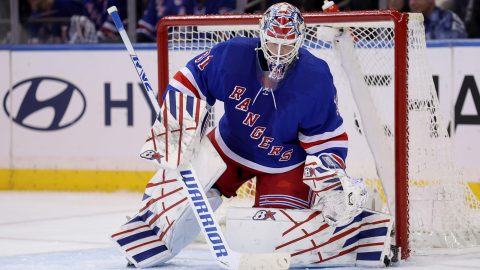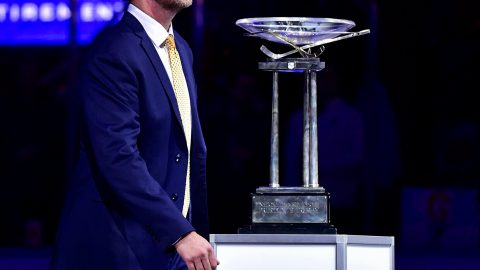We can thank a New York-Boston baseball alliance for the trade deadline.
In both leagues, back in 1922, the New York teams were contending and the Boston teams floundering. Within a span of a week beginning July 30, the two Boston teams essentially sold needed players to the two New York teams, leaving owners and fans in the other eight Major League cities furious.
Their griping led to a June 15 deadline being imposed and that deadline stuck until the 1980s, when it was moved to July 31 (ironically past the date that originally gave it life).
The deadline is pretty silly when you think about it. Why can't teams deal throughout the season? If you get a major injury after July 31 like the Mets did last year with closer Billy Wagner, you have no recourse. That, to me, seems arbitrary.
But anything with a deadline is exciting. Well, except tax season, I guess. Plus we can gauge from deals which teams consider themselves to be contenders.
The Reds? Really? Why bother getting Scott Rolen from the Blue Jays? Maybe just because GM Walt Jocketty likes him. Cincy seems pretty hopeless in '09 by any reasonable standard. A move for 2010 seems unwise given the chronically injured Rolen (shoulder).
Let's look at the numbers for the players changing zip codes and assess who is likely to rise and fall, value-wise, for the balance of '09.
Buy
Cliff Lee, P, Phillies: He was victimized by a .318 average against balls in play (BABIP) for Cleveland. Average is about .304. But the Phillies are a little better than average in BABIP allowed (.301), while the Indians are the second worst in the AL (.315). Less hits means less runs and a lower ERA. Lee, of course, also gets to face pitchers and the weak lineups in the NL East.
Mark DeRosa, 3B, Cardinals: His power is really up this year. DeRosa's recent homer binge proves the injured wrist that sidelined him right after the trade from Cleveland is not an issue. The average will correct itself when either the line-drive rate (11.8 percent) or BABIP (.178) rise.
Matt Holliday, OF, Cardinals: St. Louis was the big winner at the deadline. Holliday's OPS since the trade back to the NL is 1.546. That's never going to last, of course, but hitting behind Albert Pujols means lots of opportunities to plate runners on base. He'll probably run less for St. Louis (12th in the NL with 47 steals).
Justin Masterson, P, Indians: This is only a "Buy" for owners in keeper formats, as Masterson is likely to move into the rotation for the Indians next year. He has an arsenal that projects as a starter, highlighted by an average fastball velocity of 92.3. He'll have to learn to feature his changeup on more than this year's rate of three percent of offerings.
Hold
Jarrod Washburn, P, Tigers: His BABIP allowed this year is a very lucky .244 (it was .303 last year). The ERA likely will rise, but he will help the Tigers and will not hurt owners who toil in deeper formats.
Victor Martinez, C, Red Sox: He hits better as a first baseman (.866 career OPS vs. .827 behind the dish). But moving to Fenway does not typically boost power. The Green Monster helps you in batting average, but the switch-hitting Martinez is weaker batting righty (.811 OPS compared to .844 as a lefty). The Red Sox are far from an offensive juggernaut (102 team adjusted OPS where 100 is average).
Orlando Cabrera, SS, Twins: He's hitting homers on 52.6 percent of fly balls as a Twin! Yes, it's only nine at bats, spoilsport. Cabrera is a more extreme ground ball hitter overall this year and more ground balls sneak through on turf (Metrodome) than on grass (Oakland).
Sell
Jake Peavy, P, White Sox: He's supposedly healthy, but he has the headwind now in the AL and goes to an extreme homer park from a park that was extreme at preventing homers. Peavy's career road ERA: 3.84. White Sox GM said that "he had no concern whatsoever" about Peavy's health because Peavy "has an ankle injury … not an elbow injury." You know, that ankle that pitchers either land or push off with.
Scott Rolen, 3B, Reds: His isolated slugging is a sub-par (for a corner guy) .156. You want about .200 from decent power sources. He remains a high-contact hitter. That's great when you're hitting .341 on balls in play with a line-drive rate of about 25 percent. But his career rates are about .314 and 22 percent. At his age and given his recent poor health, we'd expect his '09 numbers there to go down, not up.



